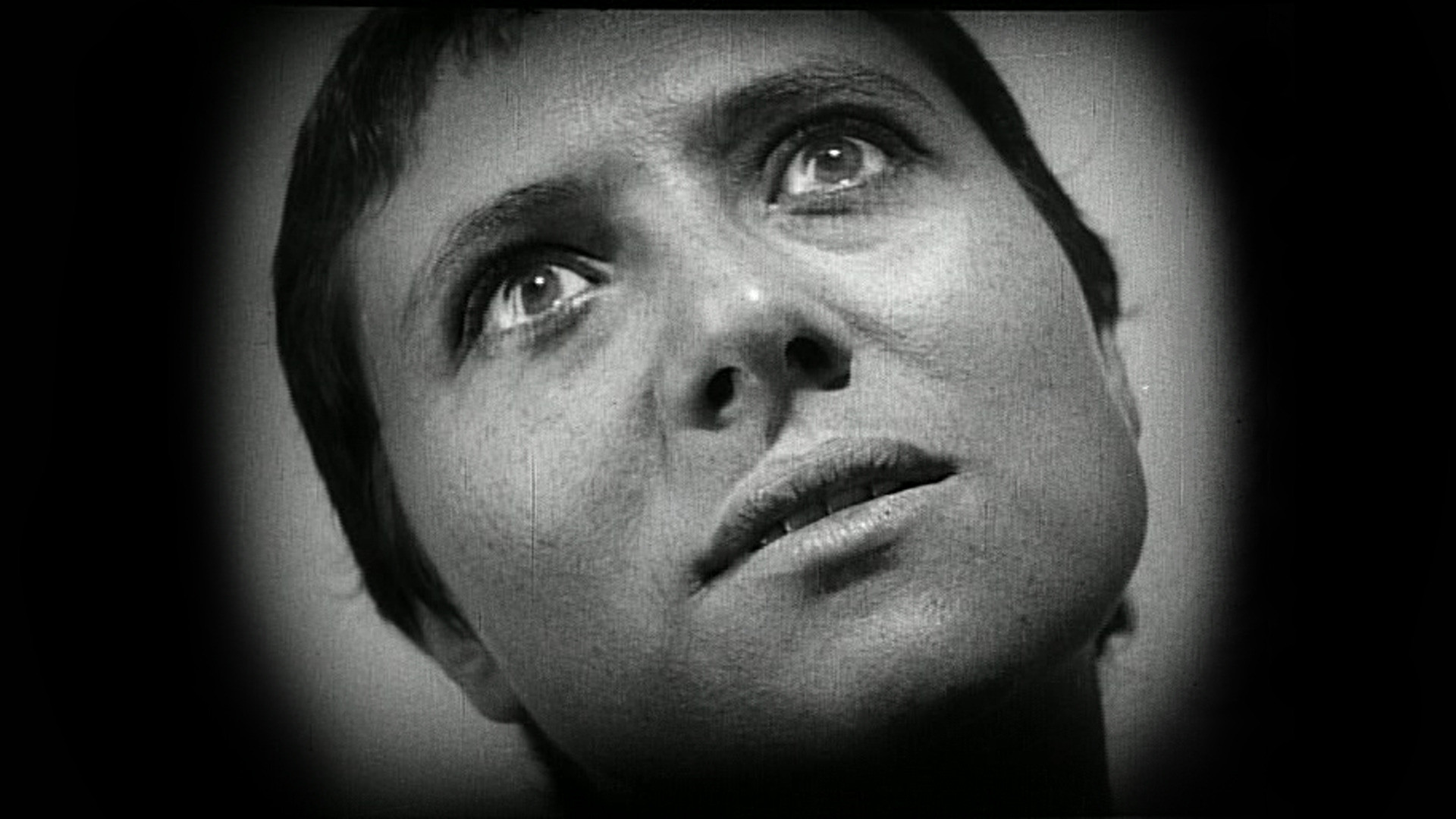Uncompromised Dedication
If the historical figure at the center of The Passion of Joan of Arc (1928) could be said to embody uncompromised dedication, the same could be said of the film’s director, Carl Theodore Dreyer. Consisting entirely of close-ups and medium shots, with only the sparest of backgrounds, Dreyer relentlessly focuses in on the characters and conflicts. It may be the closest we’ve ever come to a pure narrative cinema. As you might expect, reactions to this pared-down style vary. Most film historians view this as one of the greatest silent films ever made. I wholeheartedly agree. Others see it as too extreme. You’ll have decide for yourself.
Much of the emotional appeal of this film can be attributed to the remarkable performance by Maria Falconetti as Jeanne d’Arc. It is often cited as the finest performance ever committed to celluloid. In a 1965 interview with Cahiers du Cinéma, Dreyer explains how he chose Falconetti for the part:
I went to see her one afternoon and we spoke together for an hour or two. I had seen her at the theatre. A little boulevard theatre whose name I have forgotten. She was playing there in a light, modern comedy and she was very elegant in it, a bit giddy, but charming. She didn’t conquer me at once and I didn’t have confidence in her immediately. I simply asked her if I could come to see her the next day. And during that visit, we talked. That is when I sensed that there was something in her to which one could make an appeal. Something that she could give; something, therefore that I could take. For, behind the make-up, the pose, behind that modern and ravishing appearance, there was something. There was a soul behind that facade. If I could see her remove the facade it would suffice me. So I told her that I would very much like, starting the next day, to do a screen test with her. ‘But without make-up,’ I added, ‘with your face completely naked.’ She came, therefore, the next day ready and willing. She had taken off her make-up, we made the tests, and I found on her face exactly what I had been seeking for Joan of Arc: a rustic woman, very sincere, who was also a woman who had suffered. But even so, this discovery did not represent a total surprise for me, for, from our first meeting, this woman was very frank and, always, very surprising.
Dreyer based the script on the original trial transcripts from the year 1431, as well as a novel by Joseph Delteil. The film took a year and a half to complete, in part because Dreyer insisted that the costumes, church, courtyard, gestures, and other aspects of the production were as authentic as possible. The whole construction was painted pink, rather than white, to give it a gray tint against the sky.
According to Ebbe Neergaard’s book Carl Dreyer: A Film Director’s Work, Dreyer demanded absolute silence and banished anyone who wasn’t needed whenever Falconetti had an important scene. Neergaard writes, “She was, as it were, activated into expressing what Dreyer could not show her, for it was something that could only be expressed in action, not speech, and she alone could do it, so she had to help him. And she realized that this could only be done if she dropped all intellectual inhibitions and let her feelings have free access from her subconscious to her facial expression.”
The Passion of Joan of Arc
(1928; directed by Carl Theodore Dreyer)
Criterion Collection (Blu-ray and DVD)
Thursday, May 1 at 3:00 a.m. eastern (late Wed. night) on Turner Classic Movies
Reviews